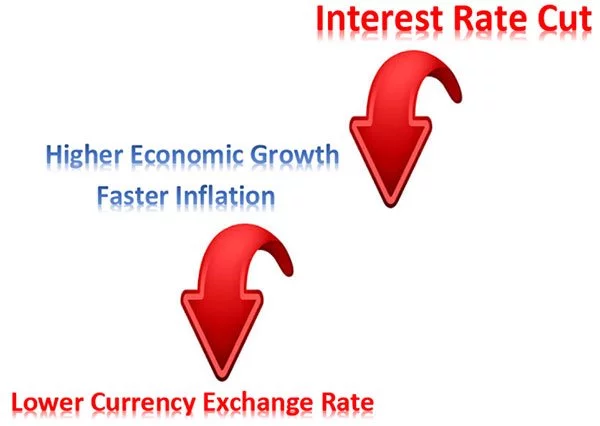-
Best Forex Brokers
Our top-rated Forex brokers
-
Islamic Account Brokers
Best accounts for Muslim traders
-
Brokers for Beginners
Start trading here
-
Forex Demo Accounts
Learn to trade with no risk
-
No-deposit Bonuses
Live trading with no deposit
-
ECN Brokers
Trade with Direct Market Access
-
Lowest Spread Brokers
Raw spreads & low commissions
-
High Leverage Brokers
Extend your buying power
-
Market Maker Brokers
Fixed spreads & instant execution
-
MetaTrader 4 Brokers
Top MT4 brokers in Malaysia
-
MetaTrader 5 Brokers
Top MT5 brokers in Malaysia
-
TradingView Brokers
Top TradingView brokers
-
cTrader Brokers
Top cTrader brokers in Malaysia
-
Forex Trading Apps
Trade on the go from your phone
-
Copytrading Brokers
Copy professional traders
-
All Trading Platforms
Find a platform that works for you
Interest is a fee charged for borrowing cash. It’s a fee charged by one party who lends money to another party, where the interest rate is a percentage rate at which that fee is charged. Interest rates are one of the major drivers of the Forex currency market, as changes in interest rates greatly affect currency value.
Interest rates are set by a central bank. In the USA, interest rates are set by the Federal Reserve Bank and the European Central Bank is responsible for setting the interest rates for the Eurozone. These central banks use interest rates to promote economic growth or to curb inflation.
Interest Rates Impact on Currency Market
When the central bank increases the interest rates, the cost of borrowing goes up. This means that homeowners will need to pay more on their mortgages and as an effect, they have less disposable income to spend on other retail goods. This forces the demand for these goods to go down and keeps calms inflationary pressures.
Goods manufacturers are now faced with lower demand for their products, and they are unable to raise the price to cover the loss. Therefore, rising interest rates will restrain the economy by decreasing the demand for goods and services. However, when the economy needs a stimulus the central bank might want to decrease the interest rate to jump-start the economy by releasing cash into the economy to encourage spending.
Explaining Lower Interest Rates

When interest rates are lower, homeowners spend less on mortgages and therefore have more money to buy other goods and services. These goods need to be produced so by lowering interest rates production will rise, and thus stimulate economic growth. It’s not just mortgages that are affected by interest rates; factories and other areas of industry borrow money to invest in growth. When interest rates are low the cost of borrowing is low, business owners will be more inclined to grow their business and will borrow money. This money is invested in the economy spurring further growth.
Explaining Higher Interest Rates

On the other hand, when interest rates rise, business owners will slow their investment as it is more expensive for them to do so, and thus the economy will slow down because less money is invested. A higher interest rate means that you gain higher rates of return for the money you hold in a savings account and therefore benefit those who have savings or control money supply.
Interest Rates and Exchange Rates
If one country has a higher interest rate than another country, capital will flow into the country with a higher interest rate because investors will get more return on their savings. Because the country with the low-interest rate currency is going to be exchanged for the country with higher interest rate currency, this increasing demand for the higher interest rate currency and this currency appreciates in value. In contrast, the lower interest rate currency tends to depreciate in value.
However, we should keep in mind that these simple straightforward relationships don’t occur very often in the real world as there are many factors in determining the intrinsic value of currencies.
Even though longer-term investors are more likely to favour currencies with higher interest rates, this is more likely to happen in an environment when we have a big divergence in monetary policy between two central banks. For example, the US Federal Reserve and the ECB are on opposite sides of the monetary policy spectrum. Firstly, we have the Fed which is the only major central bank to embark on a tightening cycle, hiking rates in December 2015 for the first time since the 2007 financial crisis, and on the other hand, the ECB is pursuing an easing monetary policy.
Interest Rates Differential
The difference between one currency’s interest rate and another currency’s interest rate is known as the interest rates differential. If the interest rate differential increases it reinforces the higher interest rate currency, while a decrease in the interest rate differential reinforces the lower interest rate currency.
The interest rate differential is a key component of the carry trade. The carry trade is based on the idea of going long a currency with a higher interest rate and simultaneously selling a currency with a lower interest rate.
Conclusion
Interest rate announcements are important news events which all types of traders should pay attention to. These announcements can give traders clues to better forecast currency exchange rates.
More important than the interest rate is the interest rate expectation. Usually, currency values change in advance of the announcement as the market tries to price in these changes in monetary policy before they happen. So as we approach a possible interest rate new event, watch the market for new trends and trading opportunities.
References
- Effect of raising interest rates – Tejvan Pettinger – 2017
- How Are Interest Rates Affecting Household Consumption and Savings? (pdf) – Lacy Christensen (Utah State University) – 2012
Stay updated
This form has double opt in enabled. You will need to confirm your email address before being added to the list.




























